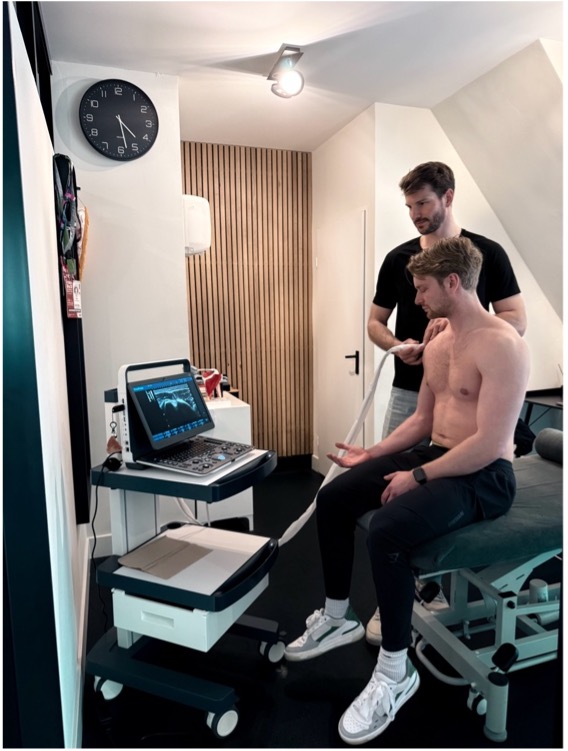Personal Training vs. independent training at the gym: what works better?
For many people, fitness is an important part of their health and well-being. However, there is often doubt about the best approach: training with a personal trainer or working independently at the gym. In this blog, we compare both methods based on three key outcomes: muscle strength, body composition and training discipline. As always at EBP Studio Amsterdam, we use information from scientific studies that directly compare these two forms of training.
Muscle strength: more progress with guidance
One of the most researched effects of training is the increase in muscle strength. Nine studies that compared personal guidance with independent training showed that participants showed significantly greater strength gains under the supervision of a personal trainer. For example, Storer et al. reported a 42% increase in chest pressure and 38% in leg press in the assisted group, compared to 19% and 25% in the independent group (1). Other studies also confirm this picture: Coleman et al. found that one-on-one guidance led to greater improvements in squat performance and muscle thickness, while bench press results were similar (2).
What explains these increases in strength is, among other things, the better training intensity and progress among supervised participants. Mazzetti et al. showed that under direct supervision, not only did the maximum strength increase, but the training load and the number of repetitions also increased significantly compared to independent training (3). Ratamess et al. also found that participants with a personal trainer maintained a higher self-selected training intensity than those unaccompanied (4).
In summary:
Personal Training results in greater strength gains almost consistently than training independently. This is probably due to a better coordinated training load, more intensive guidance and more correct execution of exercises.
Body Composition: Modest Benefits for Personal Training
When looking at changes in body composition, such as increases in muscle mass and decreases in fat mass, the differences are less pronounced but present. Six of the seven studies that measured this outcome reported better results for Personal Training. For example, Storer et al. reported a 1.3 kg increase in lean body mass in the supervised group, while the independent training group showed no significant change (1).
Coleman et al. showed that supervised participants developed greater muscle thickness and lean mass than their independently training counterparts (2). In the study by Matos et al., both waist circumference and skin fold thickness decreased more strongly in the supervised group than in the unaccompanied group (5). Lu et al. reported a fat loss of 1.61 kg in the personal training group, something that was not seen in other groups (6).
However, it is important to note that differences in body composition are not always clinically significant. In their systematic review, Fisher et al. concluded that the effect of counseling on body composition was small (effect size 0.07; 95% CI: -0.01 to 0.15) (7).
In summary:
Although personal guidance led to better body composition in most studies, the differences are usually modest. The biggest gain seems to lie in muscle building, with a possibly smaller effect on fat loss.
Training Discipline: Small Benefits for Guided Trajectories
Another important factor is consistency. After all, how often people actually perform their training courses makes a big difference to their results. Five studies reported on training discipline, with the supervised group achieving higher attendance rates in three of these studies.
In the study by Rustaden et al., the personal training group attended an average of 32.2 out of 36 sessions, while the independent training group was at 26.9 and the group class participants only 21.1 (8). Coleman et al. also found a slightly higher turnout among the supervised group (96% vs. 92%) (2). In the Gentil and Bottaro study, the difference was minimal (88% with high supervision vs. 87% with low supervision), but still in favor of the more intensively supervised group (9).
Fisher et al. reported in their meta-analysis that the average attendance was slightly higher in supervised programs (91.5%) than in stand-alone programs (87.1%) (7).
In summary:
Personal Training usually provides slightly better training discipline. This can result from a greater degree of responsibility towards the trainer, a clearer plan and more motivation.
Training Quality: More Structure, More Results
In addition to measurable outcomes such as strength or body changes, we also looked at the content of the training sessions themselves. Personal Training was more often structured and structured periodically, with controlled progress and the right technique (1,3,5). Independent training showed more variation and less progression. Studies measuring intensity and load concluded that supervised participants increased their weight faster and more frequently and trained to muscle failure (3,4,9).
In summary:
Personal Training is usually better structured and tailored to the participant, which ensures more efficient progression.
Disadvantages of Personal Training
Although the benefits of personal training are compelling, there are also disadvantages. The most obvious is the price. Personal training is substantially more expensive than training independently. This was not specifically addressed in the studies, but is an important consideration in practice. In addition, there is less flexibility: the customer must adapt to the trainer's agenda. Finally, personal guidance may be experienced as too intense or performance-oriented for some people.
Who is Personal Training for?
Based on the studies mentioned, we can say that Personal Training is particularly suitable for:
- Beginners who need guidance in technique and structure.
- People with clear goals such as strength gain or muscle building.
- People who have trouble with consistency and motivation.
- Customers who want maximum results in the shortest possible time.
Independent training, on the other hand, is more suitable for people with:
- Experience in strength training.
- A strong sense of self-discipline.
- Specific training preferences or irregular schedules.
- A limited budget.
Conclusion
Ten scientific studies show that personal guidance in resistance training leads to significantly greater strength gains, modestly better improvements in body composition, and slightly higher training discipline than training independently. Personal Training is more effective because of their structured structure, more intensive workload and personal feedback. Nevertheless, the choice depends on personal preferences, budget and experience.
For those seeking maximum results in a safe, structured way, personal training is a worthwhile investment.
References
- Storer T, et al. Effect of Supervised, Periodized Exercise Training Vs. Self-Directed Training on Lean Body Mass and Other Fitness Variables in Health Club Members. J Strength Cond Res. 2014.
- Coleman M, et al. Supervision During Resistance Training Positively Influences Muscular Adaptations in Resistance-Trained Individuals. J Sports Sci. 2023. https://doi.org/10.1080/02640414.2023.2261090
- Mazzetti S, et al. The Influence of Direct Supervision of Resistance Training on Strength Performance. Med Sci Sports Exercise 2000. https://doi.org/10.1097/00005768-200006000-00023
- Ratamess N, et al. Self-Selected Resistance Training Intensity in Healthy Women: The Influence of a Personal Trainer. J Strength Cond Res. 2008. https://doi.org/10.1519/JSC.0b013e31815f29cc
- Matos AR, et al. Strength Training Promotes Anthropometric and Functional Benefits in Sedentary Subjects: Does a Personal Trainer Matter? Human Movement. 2021. https://doi.org/10.5114/HM.2021.103286
- Lu Y, et al. Comparing the Impact of Personal Trainer Guidance to Exercising with Others: Determining the Optimal Approach. Heliyon. 2024. https://doi.org/10.1016/j.heliyon.2024.e24625
- Fisher J, et al. The Role of Supervision in Resistance Training; an Exploratory Systematic Review and Meta-Analysis. Int J Strength Cond. 2022. https://doi.org/10.47206/ijsc.v2i1.101
- Rustaden AM, et al. Body Pump And Resistance Training With And Without A Personal Trainer - A Randomized Controlled Trial. Med Sci Sports Exercise 2016. https://doi.org/10.1249/01.mss.0000486798.79214.3f
- Gentil P, Bottaro M. Influence of Supervision Ratio on Muscle Adaptations to Resistance Training in Nontrained Subjects. J Strength Cond Res. 2010. https://doi.org/10.1519/JSC.0b013e3181ad3373



